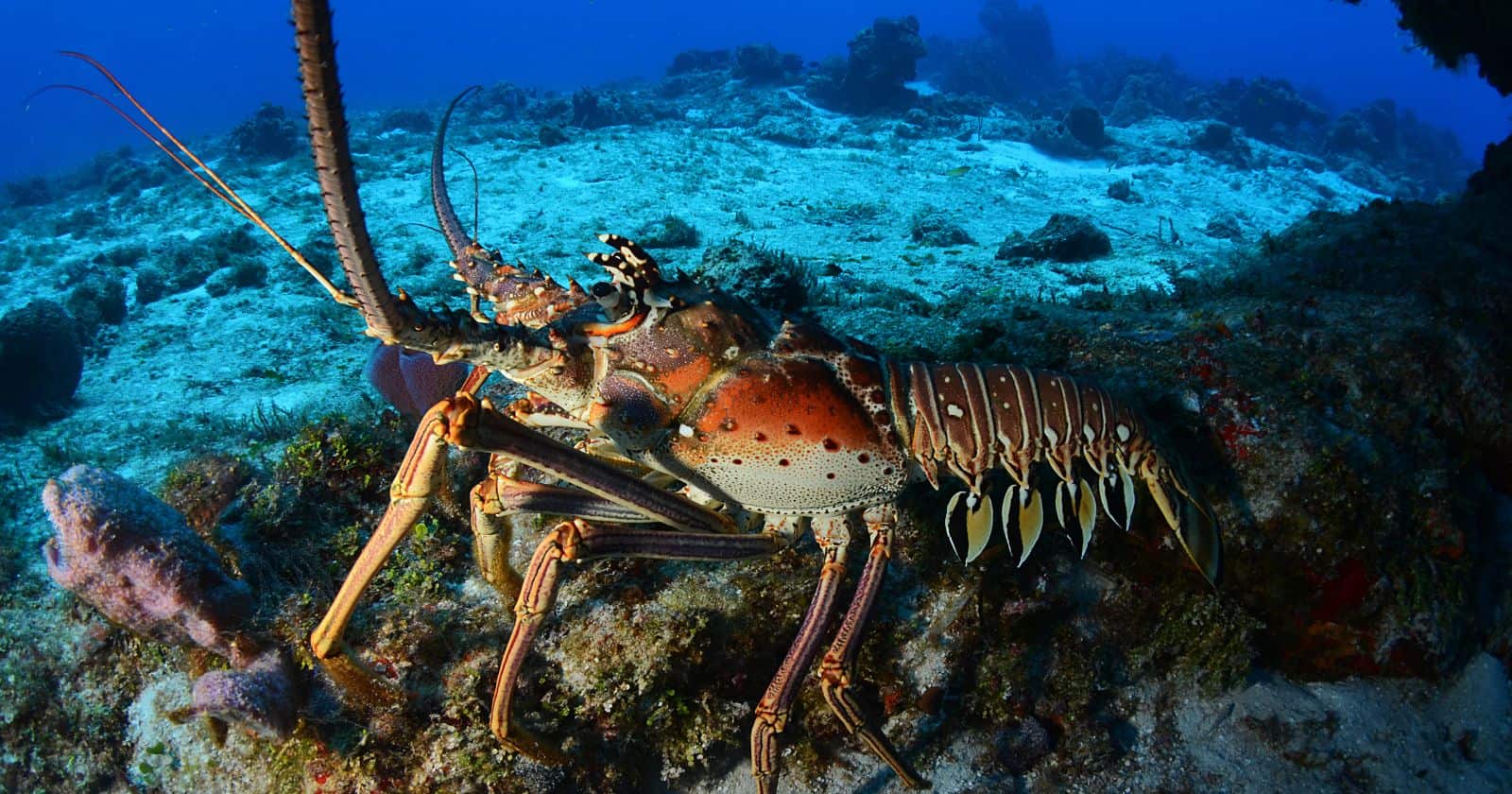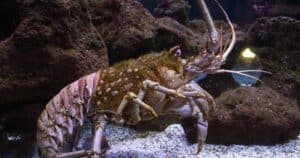Have you ever wondered how lobster eggs stay attached to the mother’s tail for almost a year.
If you’re curious about sea creatures and their mysterious ways, you’ll be fascinated to learn about the glue-like substance and tiny filaments that keep the eggs firmly in place.
But if you’re a lobster lover, you might also feel the pain of waiting for the eggs to hatch and wondering about the risks that a pregnant lobster faces in the wild.
In this article, we’ll explore the intriguing details of how lobster eggs stay attached, from the biology of fertilization to the physical mechanics of attachment.
So, get ready to dive into the underwater world of lobster eggs and discover the secrets of sea creatures revealed.
The Biology of Lobster Reproduction: Understanding Fertilization
Lobsters reproduce sexually; the female lobster can lay up to 100,000 eggs, depending on size.
During mating, the male lobster deposits sperm into the female’s sperm pouch, where it awaits fertilizing the eggs.
The fertilized eggs are carried under the female’s tail for 9 to 12 months.
Mating only occurs after the female molts, and she releases pheromones to signal her readiness.
Fertilization doesn’t occur instantly; in fact, it takes several months for the sperm packet to fertilize all the eggs carried by the female.
The female carefully keeps the eggs oxygenated and clean during this time by fanning her tail through the water.
If she doesn’t care for them properly, the eggs can die or become infested with parasites.
Interestingly, female lobsters can store sperm from multiple males in one batch of eggs, resulting in baby lobsters with a mix of genetic traits.
Researchers theorize that this may help populations adapt to changing environmental conditions more quickly.
After 9 to 12 months of carrying the eggs, the female lobster releases them into the water column.
The eggs hatch into tiny, planktonic larvae that float in the ocean currents for several weeks before settling on the ocean floor.
Only a small number of these larvae will survive to adulthood, but those that do will eventually grow into the delicious lobsters we enjoy on our plates.
From Fertilization to Egg Production: How Do Lobsters Reproduce.
Lobsters reproduce sexually, with the male lobster depositing sperm into the female’s sperm pouch during mating.
The female then carries the sperm and fertilizes her eggs externally under her tail for 9 to 12 months.
Once the time is right, she releases the eggs, passes them by the seminal receptacle, and fertilizes them with stored sperm.
During the 9 to 12 months, the female carries the fertilized eggs; she fans them with her swimmerets to keep them oxygenated and debris-free.
The eggs, which are dark green in color and have an irregular shape when fertilized, are attached to the female’s swimmerets by a sticky substance.
After hatching, the larvae float in the water column for several weeks before settling on the ocean floor and beginning their life cycle as juvenile lobsters.
These juvenile lobsters grow and molt several times before reaching maturity, which can take 5 to 7 years.
The Marvelous Glue-Like Substance that Keeps Lobster Eggs Attached
The female lobster secretes the unique glue-like substance that keeps lobster eggs attached.
It’s a natural adhesive that helps keep the eggs in place and safe from predators and debris.
The female lobster connects the eggs under her tail with this sticky substance and then fans them with her swimmerets to ensure they’re oxygenated and free from debris.
Once the larvae hatch, they float in the water for several weeks before settling on the ocean floor to start life as juvenile lobsters.
Lobsters are fascinating creatures, and their ability to produce such an effective adhesive substance is marvelous.
Here are some more details about the gluey importance that keeps lobster eggs attached:
- The adhesive comprises several components, including proteins and lipids, which give it its sticky texture and make it resistant to water.
- The female lobster produces the adhesive in her ovary and transports it to a special gland on her fifth pair of walking legs.
- When the eggs are ready to be laid, the female releases the adhesive from the gland and applies it one by one, using her walking legs to position them under her tail carefully.
- The adhesive hardens quickly, forming a protective barrier around the eggs that helps keep them safe and secure until they hatch.
It’s fascinating to think about the complex biology that goes into producing such an effective adhesive substance.
And it’s even more amazing to consider the impact that this substance has on the lobster’s survival, ensuring that its offspring are protected in the dangerous world of the ocean.
A Closer Look at the Filaments that Keep Lobster Eggs in Place
Lobster eggs stay attached with the help of ovigerous setae, tiny filaments located on the female lobster’s swimmerets.
These specialized appendages act like hooks to help hold the eggs in place.
While the female lobster secretes a glue-like substance to attach the eggs under her tail, the ovigerous setae assist in keeping the eggs secure.
These filaments are critically important, protecting the eggs from predators and damage from surrounding debris during the long hatching period.
The eggs are attached to the swimmerets during the nine to twelve months, and the female lobster undergoes several molting processes.
This natural adhesive ensures that portions of the egg coatings and attachment stalks remain attached to the ovigerous setae until the successive molt.
It’s a vital part of the egg attachment process, ensuring the eggs stay protected until they hatch into juvenile lobsters.
Female lobsters invest much time and energy into protecting and nurturing their eggs.
They carry the eggs with them everywhere they go, including during foraging and hunting.
Female lobsters have to eat more to maintain their energy levels while carrying eggs, and because of the added weight of the eggs, their mobility is more restricted.
However, the maternal instinct in female lobsters is powerful, and they will do everything it takes to protect their eggs until they’re ready to hatch.
Challenges for Female Lobsters: Predators, Parasites, and Environmental Stressors
Female lobsters face various challenges that can significantly impact their ability to reproduce successfully.
Predators, parasites, and environmental stressors create obstacles for female lobsters during their reproductive cycle.
Predators such as crabs and fish always hunt for a tasty lobster, and females carrying eggs are particularly vulnerable targets.
Additionally, parasites like parasitic isopods can affect the health of female lobsters and make them less capable of reproducing.
Finally, environmental factors such as changes in water temperature and pollution can also hurt the reproductive success of female lobsters.
Let’s take a closer look at each of these challenges:
Predators
Predation is one of the biggest threats facing female lobsters, particularly during their reproductive cycle.
Because they carry large numbers of eggs on the undersides of their tail, female lobsters are much slower and more cumbersome than males.
This makes them particularly easy targets for predators like crabs and fish, which can quickly snatch a female lobster and her eggs in one fell swoop.
Parasites
Lobster parasites like the parasitic isopod can also significantly impact female lobsters’ health and reproductive success.
These tiny creatures burrow beneath the lobster’s shell, feeding on the host’s blood and other bodily fluids.
Over time, severe infestations can cause anemia and weight loss, impacting the lobster’s ability to produce healthy eggs.
Environmental stressors
Environmental factors like changes in water temperature and pollution can also pose significant challenges for female lobsters.
For example, warmer water temperatures can trigger earlier molt cycles, reducing the timing of the lobster’s reproductive cycle.
Additionally, pollution and other environmental stressors can reduce the overall quality of the habitat, making it harder for lobsters to find food and grow to maturity.
The Risks of Pregnancy for Lobsters: How Do They Survive in the Wild.
Lobsters, unlike mammals, have a unique way of carrying their fertilized eggs externally under their tails attached to their swimmerets.
Female lobsters protected their eggs using a natural adhesive substance secreted from their body and fanning them with their swimmerets, thereby keeping them free from debris and oxygenated.
Despite carrying eggs for 9-12 months, there’s no evidence to suggest that lobsters’ survival in the wild is affected.
Lobsters are hardy creatures that have evolved over millions of years to withstand the harsh conditions of the wild.
However, specific threats such as commercial fishing and habitat loss can still affect their survival in the wild.
Lobsters also face risks carrying their fertilized eggs, such as predation by other animals, parasites, or diseases.
In addition, lobsters carrying eggs require more energy to move and hunt, which puts them at risk of starvation.
Lobsters survive in the wild by adapting to their surroundings and using their senses to detect prey, predators, and danger.
They have a well-developed nervous system that enables them to process visual, chemical, and tactile information.
They can detect odors in water at a distance of several miles, and they use their antennae to detect the direction of a scent.
Lobsters also have an excellent sense of touch and can detect vibrations and movements in water.





